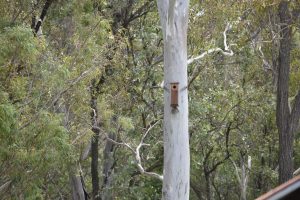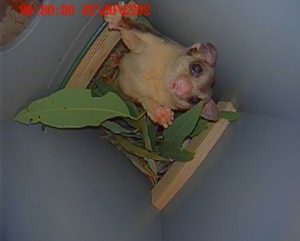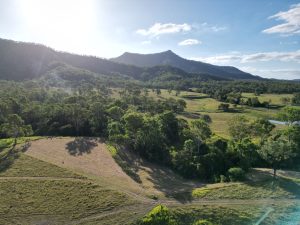Little Liverpool Range Initiative: a collaborative partnership close to home
What is the Little Liverpool Range Initiative?
The Little Liverpool Range Initiative (LLRI) has been built on a collaborative partnership between the Queensland Trust for Nature, the Turner Family Foundation, and Ipswich City Council, alongside landholders, natural resource management groups, and other councils working together with the shared goal of conservation. The purpose of LLRI is to connect people, landscapes, and ecosystems to conserve local and regional biodiversity for future generations.
The Little Liverpool Range is a northward extension of Main Range National Park and has been identified as an important wildlife corridor, supporting habitat for significant wildlife species including the koala, glossy black cockatoo, brush-tailed rock wallaby, and powerful owl. The Little Liverpool Range provides a stronghold of remnant eucalypt woodland connected within a mosaic of surrounding productive land uses.
Private land within the Range, including QTFN’s Aroona Station, is crucial to protecting and enhancing the natural values and promoting connectivity. Collectively, landholders are contributing to LLRI’s conservation goals, each managing and restoring their land and coming together to learn and share knowledge.
Connecting landholders with opportunities and capacity for sustainable land management is a key objective of the LLRI. Over the years, the LLRI has connected landholders with NRM Groups to support on-ground works including weed management and fire break maintenance, and hosting workshops on how to prepare Fire Management Plans.
What has QTFN done with the LLRI?
As a founding partner and landholder, QTFN is excited to be a part of the LLRI neighborhood and community, with Aroona Station located at the southern end of the Range.
Recently, QTFN Ecologist Michael Tervo attended the LLRI BioBlitz, one of the many community workshops hosted by the LLRI. Michael joined eager landholders and experts in the field, braving the rain, and set off to record what they could find on a spectacular property in the south of the Range. Entering data into the citizen science-based app, iNaturalist, the event recorded 382 species across two days. Check out the project here.
In 2023, Shania, LLRI Project Officer, coordinated the installation of Hollow Log Homes nest boxes across LLRI landholder properties. Four glider nest boxes were installed on Aroona Station, supporting habitat for squirrel and sugar gliders. Using a telescopic camera we are able to monitor these nest boxes and over the past year have observed utilization of all boxes. Check out the adorable squirrel glider nestled in one of the nest boxes.
The Little Liverpool Range Initiative community is a fantastic example of the power of people and the impact we can have as private landowners in protecting our natural environment.
Banner photo: LLRI members, including QTFN Ecologist Michael Tervo, at a LLRI BioBlitz early 2024
Photo credit: Brett Malcom
Date Posted: 23 May 2024




